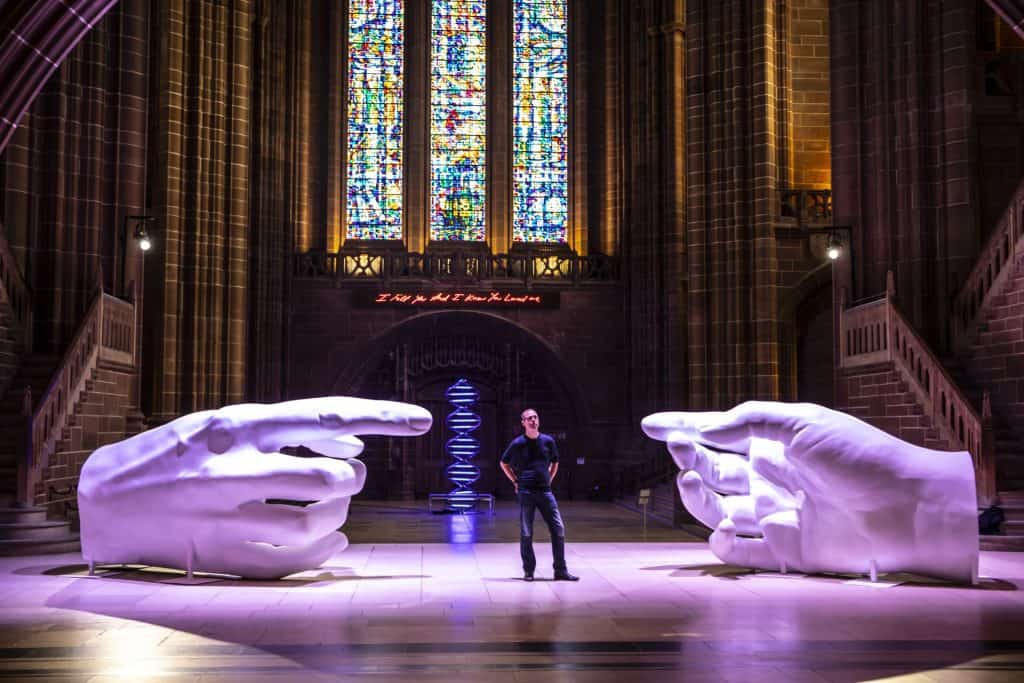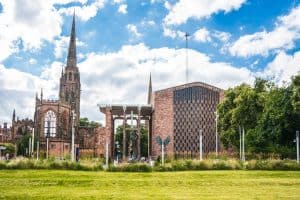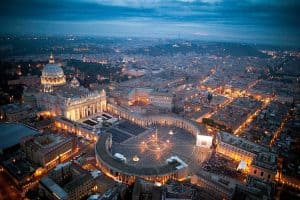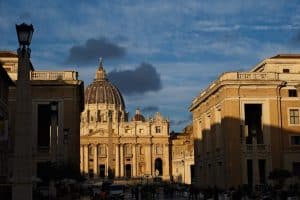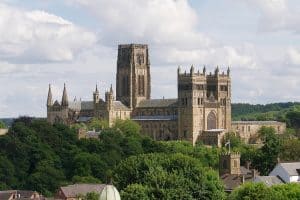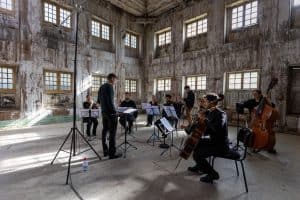By Angela Youngman
Art encourages reflection, discussion and exploration — which is why England’s cathedrals and churches are increasingly involved with art, from sculpture to paintings, and from textiles to illumination. Nor is it just touring exhibitions: there are also artists-in-residence.
As the sculptor and light artist Peter Walker says: “There is a renaissance in art in Britain’s cathedrals. It is not artwork for galleries or museums but for sacred spaces.”
Beth Hughes, visual arts curator at Salisbury Cathedral, added: “People do not expect to see art in a cathedral. It has to be complementary to the overall mission and message. It is not art for art’s sake.”
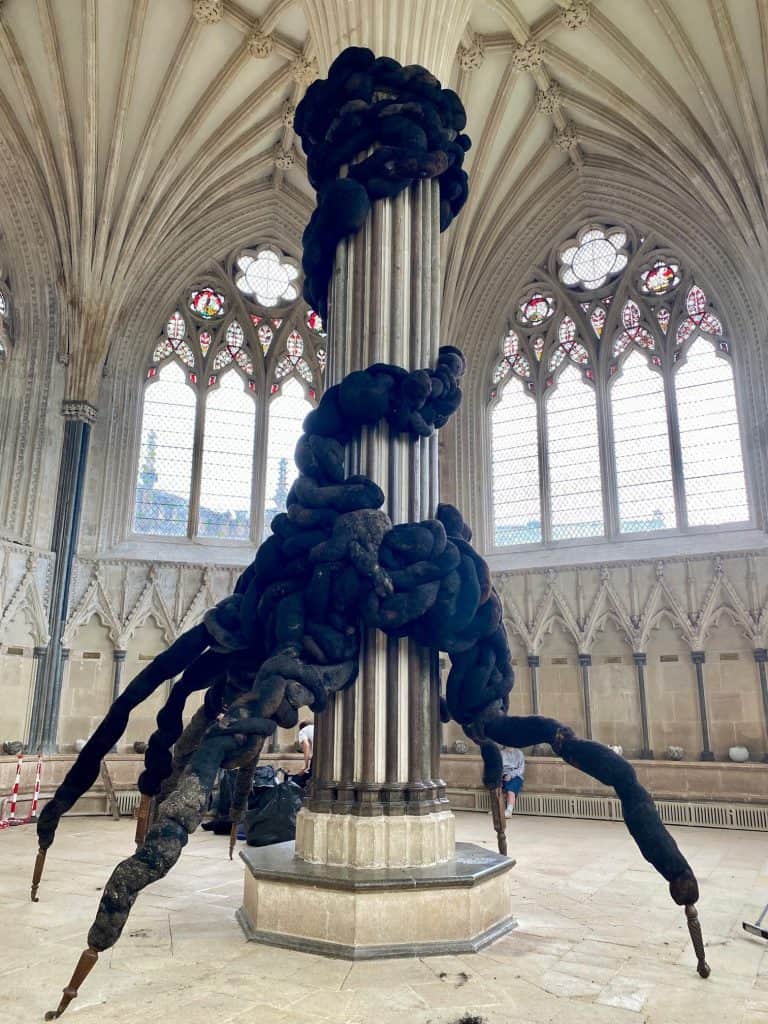
Numerous curated art projects have engaged public attention this year. A contemporary art exhibition at Wells Cathedral attracted work from artists in Germany, Hong Kong and Panama. Peterborough had Disability and the Divine by Marc Bratcher; Rest Under the Stars was on show at Carlisle; and Liverpool had Identity by Peter Walker.
This winter’s programme includes Luke Jerram’s Gaia at Truro; a graffiti artist-in-residence at St Albans, Threads through Creation at Portsmouth; and Sarum Lights at Salisbury.
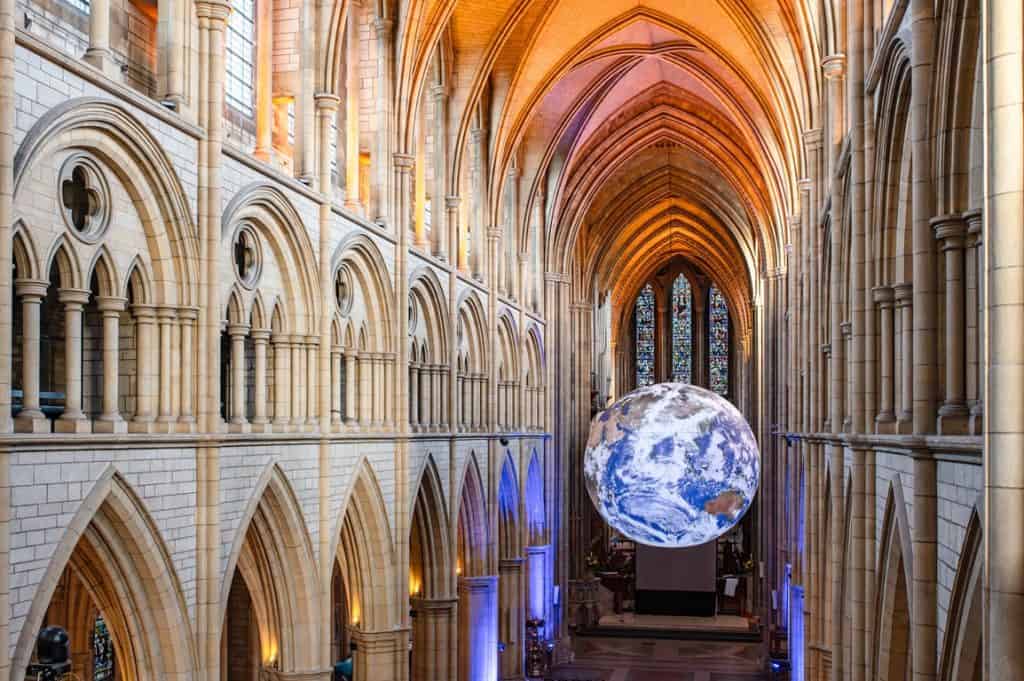
“Cathedrals have realised that art and looking at art can open up a dialogue,” says Jacquiline Cresswell, one of the first artists to work with cathedrals. “That is what is important — they have to engage with people.
“A cathedral is a place to explore what it is that makes us human. You can say things visually, that cannot be said with words. Art resonates on a different level.”
As a trustee for Arts + Christianity, an organisation that seeks to foster and explore dialogue between art, Christianity and other religious faiths, she is intent on expanding the role of art into small churches, reflecting their place in the community.
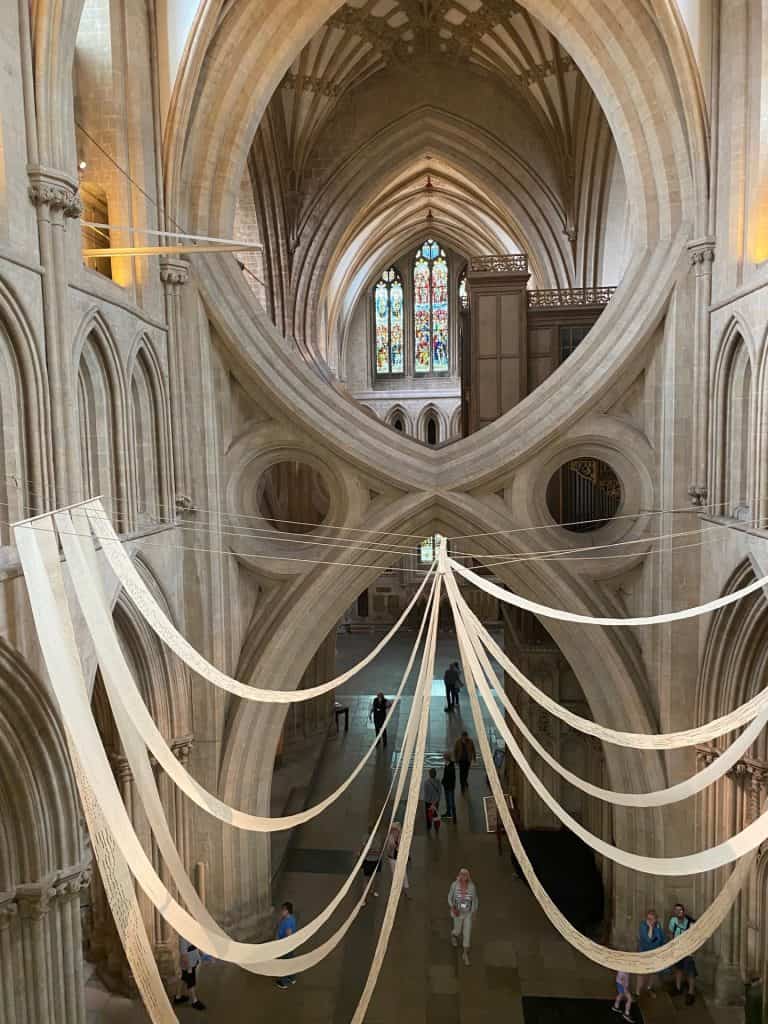
She adds: “Art is becoming an agenda item. Art is about the wider community. Anything that makes churches more accessible and open. When I started working in cathedrals in 2009, there was some nervousness and lack of understanding as to what can and can’t be done.
“Christianity lends itself to art — when these buildings were put up, people were visually literate and understood the images inside, telling the stories they were hearing in church. A certain reverence is needed and people are mindful of that.”
Ms Hughes agrees. “When we put contemporary art in a cathedral, it needs to fit, to complement the cathedral and have a really clear message. Next year we are doing an exhibition on the environment and how the air we breathe might change. Christian messages and environmental considerations work together. We want programmes that will contribute to the work of the cathedral.”
Five artists-in-residence are working on programmes at the cathedrals of Chester, Chichester, and St Albans, plus two churches, St Bartholomew the Great in the City of London, and St Mary’s Priory, Abergavenny. Artists-in-residence have previously worked in the cathedrals of Bradford, Durham, Lichfield, Worcester, and Christ Church, Oxford.
Such artists may be involved in long-term programmes or special celebrations such as the 900th anniversary at St Bartholomew the Great.
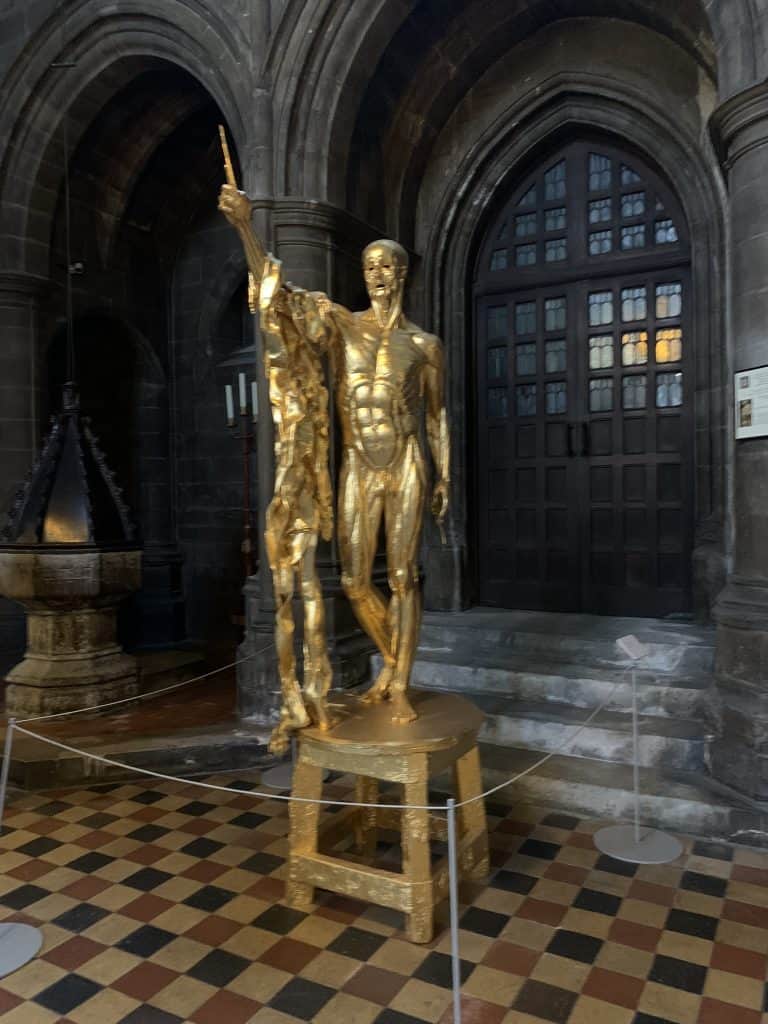
Establishing links with colleges and artists has become the norm. On the Isle of Man, Peel Cathedral has an annual budget for art projects and displays sculptures in the garden; at Southwell an artist works there on community days; and Rochester and Hereford say they are building relationships with local artists. Wakefield collaborates with ArtWorks South Yorkshire to host touring exhibitions and develop school collaborations.
Individual artists often combine a variety of locations from churches to cathedrals. For example, Jeremy Thomas toured an exhibition of originals and prints exploring the Life, Death and Resurrection of Jesus around Welsh churches and cathedrals.
The range of art being utilised in ecclesiastical buildings is wide. Winchester Cathedral worked with the National Gallery in a ground-breaking art project focusing on Jan Gossaert’s Adoration of the Kings. At St Albans, the graffiti artist Ant Steel has been helping to attract a younger, more diverse audience. Working with schools, families, Ukrainian refugees and asylum seekers, he has been exploring graffiti art past and present.
The Dean of St Albans, Jo Kelly-Moore, said: “In cathedrals throughout the ages, artists of every genre have, through their creative gifts, invited pilgrims, visitors and worshippers to reflect on life in our world through the lens of the divine. Graffiti is one of those genres and the ancient stones of St Albans Cathedral and abbey church tell that story.”
Hosting large-scale touring exhibitions has become a popular option. Such exhibitions can attract vast numbers. At Rochester, the Museum of the Moon last spring brought in the cathedral’s highest number of visitors: 120,000 in 22 days. Walker’s Peace Doves at Liverpool Cathedral attracted more than 60,000 visitors in a month and 50,000-plus people saw Jacqui Parkinson’s Threads through Revelation project during its tour of Bath Abbey, Leominster Priory and the cathedrals of Wells, Portsmouth, and Blackburn.
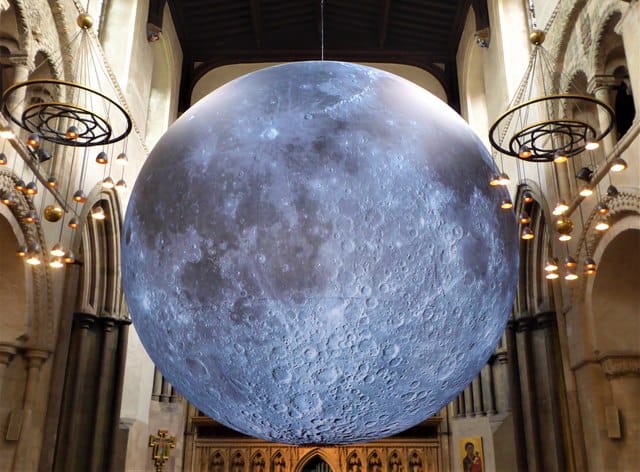
The size of cathedrals often makes them ideal locations for art and the subject matter encourages discussions and workshops — sometimes more than expected.
In late summer 2021, Dippy the Diplodocus, one of the Natural History Museum’s most treasured exhibits, made a temporary home in the nave of Norwich Cathedral. To reach it, visitors passed through time from litter-covered sand to a pristine seabed, highlighting the need for healthy waters. Children had to be prevented from cleaning up the litter. More than 200,000 people visited.
There is awareness, however, that the central religious and spiritual message of an ecclesiastical building could be overtaken by the art.
Bill Lloyd, the exhibition director for Wells Contemporary Art, said: “While not asking for religious art, the brief was for ideas which convey a sense of spiritual intensity in response to these unique medieval spaces.”
At Salisbury, Beth Hughes said: “We only work with artists who would fit in. There are some who might not have thought of being in a cathedral, having only exhibited in art galleries, but when they visit they become enthusiastic, seeing how the layers of a cathedral can be used. You have to understand humanity and faith in a cathedral.”

